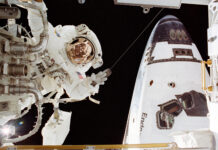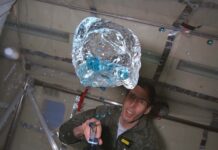Advancements in Lunar and Martian Exploration: NASA’s M-STAR Program
Exploration of the Moon and Mars is a monumental task that demands innovation and expertise from diverse fields. NASA is at the forefront of this endeavor, addressing challenges such as designing effective astronaut footwear, combating hazardous lunar dust, and devising new methods for landing on Mars. Central to these efforts is the M-STAR initiative—NASA’s Minority University Research and Education Project’s (MUREP) Space Technology Artemis Research program. This initiative not only fosters technological advancements but also aims to involve students and faculty from Minority Serving Institutions in groundbreaking space technology research.
Since its inception in 2020, the M-STAR program has granted over $11.5 million to support these institutions in contributing to NASA’s ambitious space missions. The primary goal is to harness the untapped potential of minority communities, ensuring that no innovative solution is overlooked.
Crafting the Perfect Moon Boots
One of the critical components of NASA’s Artemis missions, which aim to establish a sustainable human presence on the Moon, is ensuring astronaut safety and mobility. This includes the intricate task of designing astronaut boots that support prolonged extravehicular activities on the lunar surface. Addressing this, students and faculty from Candeska Cikana Community College in North Dakota and the University of North Dakota are working on a project named Mapi Hapa. This initiative focuses on creating a 3D-printed device that enhances the range of motion in astronaut boots, particularly targeting the ankle’s flexibility—a crucial aspect when an astronaut draws their toe back towards the shin.
Candeska Cikana Community College is a tribal college serving the Spirit Lake Nation, embracing diverse indigenous peoples such as the Dakota, Lakota, Sisseton, Wahpeton, and Yanktonai. Nicholas Bitner, an instructor at the college and a graduate student at the University of North Dakota, emphasizes the unique skill set of the tribal students. He notes their distinctive approach to problem-solving, which involves hands-on building and deliberate decision-making.
The success of their program owes much to the consistent funding and partnerships facilitated by M-STAR. Bitner highlights how these resources have expanded their capabilities, allowing them to hire students as lab technicians. This not only provides students with a sense of ownership over their research but also equips them with valuable experience and a well-paying job to enhance their resumes.
Battling the Perils of Moon Dust
Beyond footwear, another significant challenge posed by lunar exploration is the management of lunar regolith, commonly known as Moon dust. This fine, abrasive material can damage equipment and pose health risks if inhaled. Through the M-STAR program, New Mexico State University in Las Cruces has developed affordable and reliable lunar regolith simulants. These simulants serve as crucial tools in testing technologies designed for the lunar surface. The university has also established testing facilities that replicate the Moon’s environmental conditions, further aiding in the advancement of lunar exploration technologies.
A noteworthy collaboration is with the University of Maryland Eastern Shore, another M-STAR awardee. They are utilizing the lunar simulants to explore applications of smart agriculture on the Moon, contributing to NASA’s vision of sustainable extraterrestrial living.
Douglas Cortez, an associate professor in civil engineering at New Mexico State, underscores the importance of diverse perspectives in solving complex problems. He believes that individuals from Minority Serving Institutions bring unique viewpoints that lead to innovative solutions.
Progressing Towards Mars
While NASA’s immediate focus is on the Moon, the long-term goal includes crewed missions to Mars. M-STAR is instrumental in developing technologies that will make Martian exploration feasible. San Diego State University in California, supported by M-STAR funding, is advancing research on Mars entry, descent, and landing technologies. Their team is working on creating onboard algorithms that enable vehicles to autonomously guide themselves to optimal descent trajectories.
For students like Chris Davami, the M-STAR program has been a gateway to invaluable research opportunities. The program has significantly reduced his educational expenses, allowing him to continue his studies without the burden of student loans. Davami’s contributions to the M-STAR project earned him a NASA Space Technology Graduate Research Opportunity in 2023, where he focused on autonomous trajectory planning and precision landing technologies.
Building a Diverse Future Workforce
NASA’s M-STAR initiative is more than just a research program; it is a strategic effort to cultivate a diverse future workforce equipped to tackle space technology challenges. By engaging students and faculty from varied backgrounds, NASA is not only fostering innovation in space exploration but also encouraging these talented individuals to apply their technological advancements to address pressing issues on Earth.
The diversification of ideas and perspectives is crucial in driving fundamental innovations, whether in space or terrestrial applications. Through initiatives like M-STAR, NASA ensures that the pool of ideas is as diverse as the universe itself, paving the way for what was once deemed impossible.
For more information on the M-STAR program, visit NASA’s official page: M-STAR Program.
This comprehensive engagement with Minority Serving Institutions not only propels NASA’s missions forward but also empowers communities, equipping them with the tools and opportunities to contribute meaningfully to the exploration of the cosmos.
For more Information, Refer to this article.
































